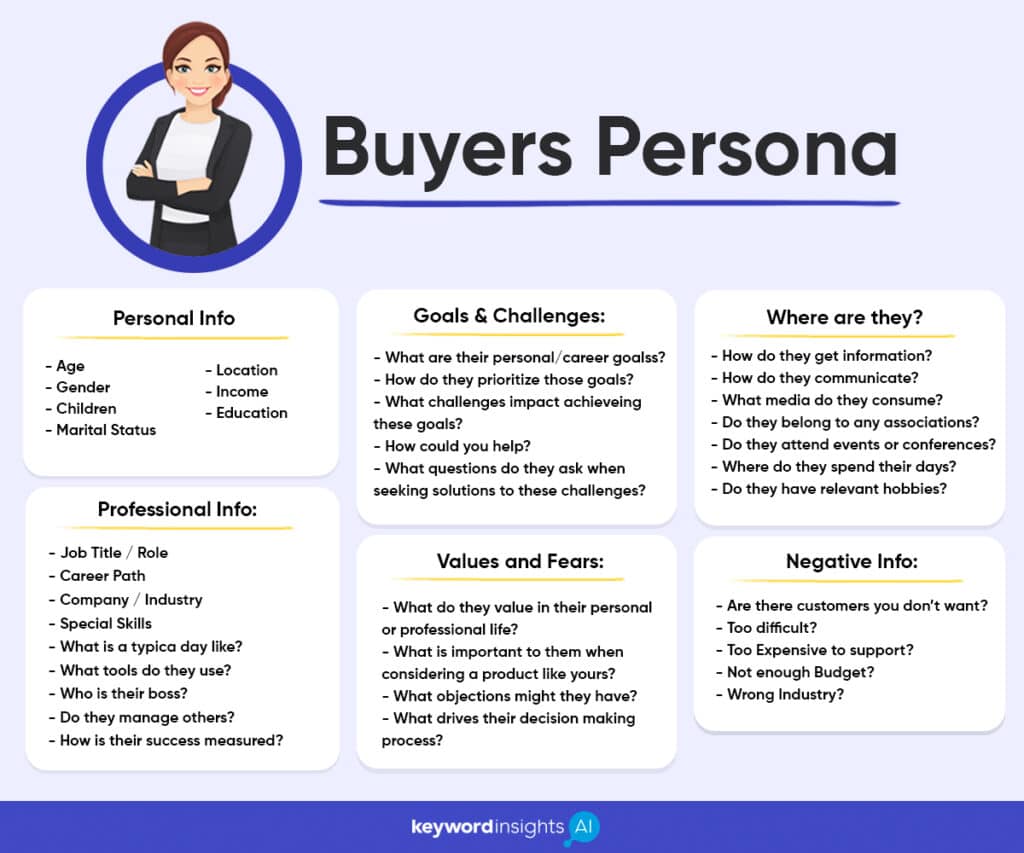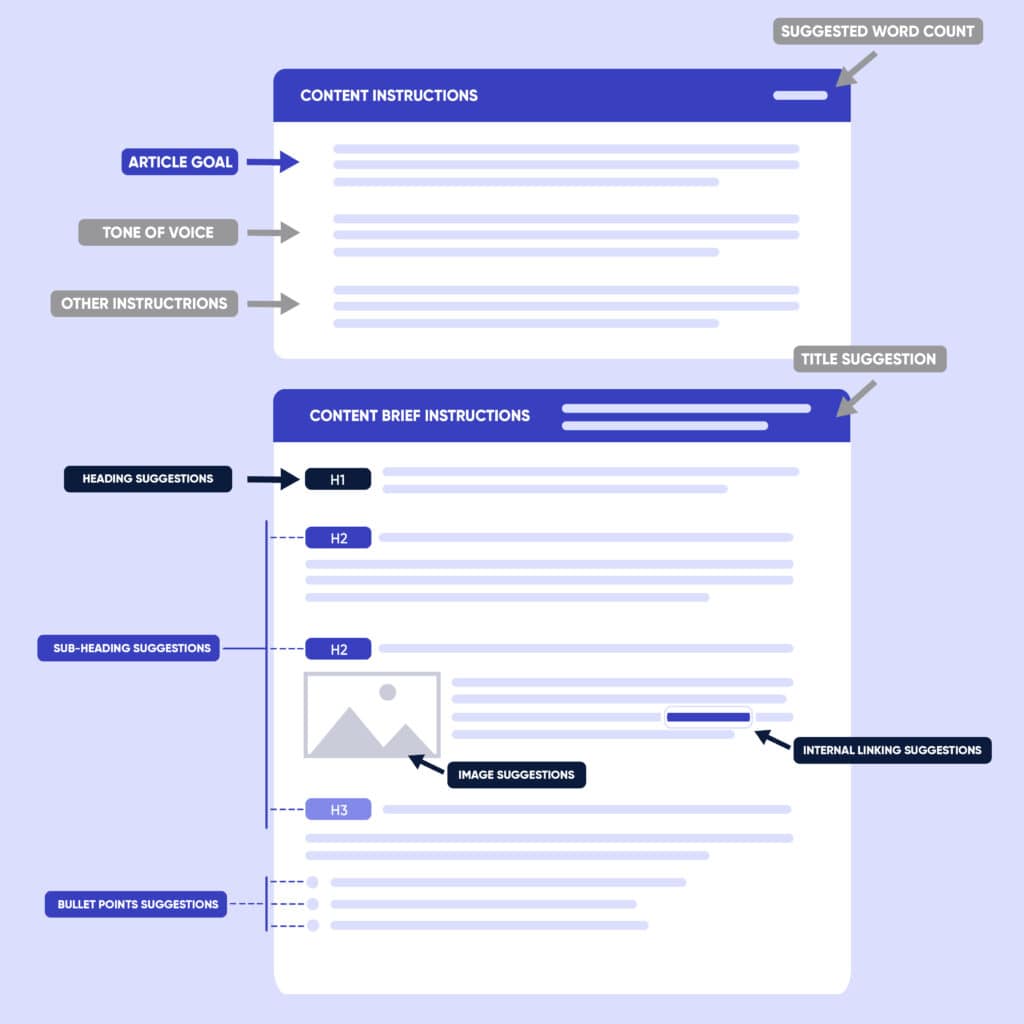Home / Blog / Fundamentals / SEO Writing – 13 Tips To Optimise Your Content For SEO
SEO Writing – 13 Tips To Optimise Your Content For SEO

May 14, 2024
Share to
In today’s digital-first world, a staggering 68% of online experiences kick off with a search engine query, underscoring the immense power of SEO. Mastering SEO content writing is not just about sprinkling your articles with relevant keywords; it’s about weaving internal and external links and savvy on-page SEO tactics to climb higher in search engine results pages (SERPs) and magnetise traffic to your site.
What Is SEO Writing?
SEO writing, also referred to as “writing for SEO,” is the methodical process of planning, creating, and optimizing content expressly for ranking well in search engines such as Google. This process involves a series of strategic steps including conducting thorough keyword research to identify what your audience is searching for, crafting high-quality content that aligns with user intent, and structuring the content with clear headers to facilitate easy page crawling by search engines. The ultimate aim is to enhance visibility and drive targeted traffic to your website.

What is the Difference Between “SEO” Content Writing and “Normal” Content Writing?
Most guides will suggest that there is a distinct difference between content writing and SEO content writing. These differences typically hinge on the following aspects:
| Feature | Content Writing | SEO Content Writing |
|---|---|---|
| Primary Objective | Aims to inform, entertain, or persuade. | Aims to achieve high search engine rankings in addition to informing or engaging. |
| Core Focus | Focuses on crafting compelling narratives or providing valuable information. | Prioritises aligning with search engine algorithms. |
| Keyword Usage | Keywords may be used naturally without much emphasis. | Keywords are carefully researched and strategically placed. |
| Structure Layout | May not adhere strictly to a structured format. | Often follows a structured layout optimised for search engines, such as using headers and subheaders for better crawlability. |
| Success Metrics | Measured by reader engagement and satisfaction. | Measured through search rankings and organic traffic. |
However, the distinction between “SEO Writing” and “Content Writing” should not be as stark as often portrayed. Both disciplines should fundamentally serve the same purpose—creating user-centric, valuable content. SEO writing should incorporate all the traditional objectives and skill sets of content writing but with some additional, specific elements such as internal linking, optimising meta tags, and adding alt tags to images. We’ll explore these elements more closely later, but it’s essential to remember that the core aim of SEO content writing isn’t merely to achieve high search engine rankings; it’s about being as user-focused and helpful as conventional content writing.
Effective SEO hinges on meeting user intent and providing the best possible answers to their queries. When content genuinely meets users’ needs, it inherently excels in SEO metrics because search engines are tailored to reward content that users find helpful and relevant. Meanwhile, traditional content writing, while sometimes less structured, would benefit from adopting some of the systematic approaches used in SEO writing, such as breaking text into subheadings and sections for better readability and navigation.
In summary, “SEO Writing” and “Content Writing” should essentially be one and the same, with SEO just adding a few tactical enhancements. These enhancements, which we’ll discuss shortly, ensure that while the content remains engaging and informative, it is also primed for better performance on search engines.
So, How Do We Write Great Content, With SEO In Mind?
Step 1 – Define Your Audience/Customer Persona
Creating detailed customer personas is essential for crafting content that not only engages but also converts. A well-defined customer persona encompasses various attributes of your target audience:
- Demographics: Details like age, gender, income, education, and marital status help in understanding who your audience is on a fundamental level.
- Psychographics: This includes interests, hobbies, values, and lifestyle choices, offering deeper insight into what motivates your audience.
- Behavioural Traits: Understanding purchasing behaviour, brand loyalty and product usage can inform how you approach potential customers.
- Goals and Challenges: Knowing the aspirations and obstacles your audience faces, both in personal and professional contexts, allows you to tailor content that resonates and provides solutions.

This profiling not only helps in visualizing the customer but also highlights their needs and decision-making processes. By aligning your content with the attributes and interests of your personas, you increase its relevance and appeal, which is crucial for SEO. Search engines prioritize content that garners engagement and fulfils user intent.
Moreover, incorporating tangential interests that may not directly relate to your product can broaden your content’s reach. For instance, if you’re marketing sports equipment, exploring related topics such as diet and nutrition can attract a wider audience. This approach not only enhances user engagement but also boosts the likelihood of your content ranking higher in search results. By addressing a broader spectrum of your audience’s interests, you make your content more linkable and shareable, which are key factors in SEO performance.
This strategic content creation, grounded in a deep understanding of your customer persona, enables you to optimize for both search engines and real human interests, driving more organic traffic and improving your site’s SEO.
Step 2 – Conduct Keyword Research
Keyword research is pivotal in shaping a successful SEO content strategy. It acts as a bridge between the detailed audience personas you’ve defined and the content that will most effectively reach them on search engine results pages (SERPs).
Understanding ‘Seed’ Keywords
Begin by identifying your ‘seed’ keywords. These are broad terms that relate closely to your products or services. For instance, if you run a small boutique hotel, you might start with phrases like “boutique accommodations” or “luxury stays.” These initial keywords should reflect the interests and search behaviours identified in your audience persona analysis—think about the terms your specific customer personas would likely use when searching for your services.
Expanding Your Keyword List
With your seed keywords as a foundation, use SEO tools like Ahrefs, Semrush, Google Keyword Planner or our very own Keyword Discovery to broaden your keyword scope. These tools help you discover additional keywords your potential customers use. You’ll also access vital metrics for each keyword, such as monthly search volumes, keyword difficulty, and cost per click (CPC), which aid in prioritizing the keywords most likely to attract significant traffic and drive conversions with less competitive effort.
Establish each keyword’s “intent”
After expanding your keyword list, it’s crucial to establish the intent behind each keyword. This involves categorising them based on the user’s purpose: informational, navigational, transactional, or commercial investigation. Tailoring your landing pages according to these intents enhances user experience and conversion rates:
- Informational Intent: The content should be educational or informative, such as a blog post or long-form guide that answers specific questions like “how to tie a tie.” These pages provide in-depth explanations that help users learn or understand something new.
- Navigational Intent: These pages are typically straightforward, and designed to help users quickly find a specific page or resource on your site, such as a contact page or homepage.
- Transactional Intent: Landing pages should facilitate transactions or prompt users to take a specific action, such as purchasing a product, signing up for a service, or downloading a resource. These pages will often include forms, checkout processes, and strong calls-to-action (CTA). You should also endeavour to work out the “sub-intent” of the keyword. I.e. is the keyword best served by a product page or a category page?
- Commercial Investigation: These pages often compare products, provide reviews, or list the best options, such as “best laptops 2024” or “top travel insurance plans.” They are designed to assist users in making purchase decisions by offering comparative insights or additional decision-making information. This type of intent can be classified as a “sub-intent” of the informational intent as users are looking for information, albeit more commercially driven.
Understanding and categorizing the intent of your keywords allows you to create targeted content that meets users’ specific needs at different stages of their decision-making process, ultimately leading to higher engagement and improved SEO performance.
Why It Matters
Effective keyword research enables you to tailor your content to the specific needs, intent and search habits of your audience. This strategic approach ensures that the right people—those most aligned with your customer personas—find your content precisely when they need it. By targeting the exact terms your prospects are searching for, you boost traffic and increase the likelihood of engaging users who are more inclined to convert.
Incorporating insights from your audience persona into keyword research not only refines your content strategy but also strengthens its impact, laying a robust foundation for SEO success.
Step 3 – Clustering and Analysis
After compiling an extensive list of keywords, the next vital step is keyword clustering. This process involves grouping similar keywords into focused themes that guide content creation. By clustering keywords, you can address multiple related search queries with a single piece of content, enhancing its relevance and boosting its appeal to search engines.
For example, keywords like “affordable luxury hotels” and “budget boutique hotels” can be consolidated into a single content piece themed around affordable luxury accommodations. Keyword clustering not only helps you understand how to group and target your keywords effectively but also transforms your large, unstructured list into a well-organized and manageable set of thematic groups. It helps you understand what topics can, and should, be targeted on the same page.
In the image below you can see 7 similar keywords that have all been clustered together. If you want to rank for all these keywords, we can do so with one, single piece of content. But we should aim to cover and mention these keywords in that piece of content where appropriate.

Most tools designed for keyword clustering allow you to upload your keywords using a CSV file. This feature simplifies the process of importing your prepared list into the clustering tool. Once uploaded, you can efficiently identify groups of related keywords and pinpoint content gaps on your site, thus paving the way for a refined content strategy.
Here is a comprehensive guide on keyword clustering, covering everything from fundamental concepts to advanced techniques.
Step 4 – Create A Content Brief/Outline (For Long Form Content)
This step is crucial primarily for informational blogs, articles, and guides, and generally isn’t necessary for product or category pages.
Exceptional content starts with detailed planning, especially when someone else will be writing it. Clear communication of key information and expectations is essential. A content brief acts as a blueprint, guiding the creation process to ensure each piece of content, whether produced internally or externally, is comprehensive and stands out against competitors. These briefs not only make the writing process faster and more efficient but also help ensure consistency across all content.
What is a Content Brief?
A content brief is a detailed document provided to writers that outlines the critical information, goals, and objectives for the content they will develop. It guides content creators on expected outcomes and how to align their writing with the strategic goals of the project. A comprehensive content brief includes:
- Target Audience: Who the content is aimed at.
- Tone and Style: The voice and mood the content should convey.
- Key Points: Main topics and themes to cover.
- Specific Requirements: Any particular constraints or needs, such as keyword inclusion and placement.
- Format and Length: Outline of the structure and the expected length of the content.
- Branding and Marketing: Relevant brand messages and marketing goals to integrate.
- Keyword Optimisation: Specific instructions for keyword usage, including headings and subheadings (many of these might have come from your keyword clustering mentioned in the step before).
- SEO Best Practices: Guidance on on-page SEO elements like internal and external linking (something we’ll go onto discuss shortly).
Creating content briefs, even for personal projects, can significantly simplify the writing process. While personal briefs might not include branding or tone, they should outline the core structure and key points to address, ensuring thorough research and efficient content development. In short, the process of creating a content brief ensures you have thoroughly researched your target keyword.
We’ve written a detailed guide on how to create content briefs here.

Step 5 – Create High Quality, SEO Optimised Content: 13 Tips For SEO Writing Greatness
At this stage, if you’re working on SEO for a long-form guide or blog, you should already have a content outline or brief ready. This brief would include a targeted keyword cluster and incorporate crucial headings, questions, and topics as per the previous guide. If you’re optimising a product or category page, you might not have a detailed brief, but you should be clear on the keywords, topics, and the intent—whether it’s best suited for a product page or a category page.
Once you’ve determined the appropriate page type for your keywords (blog, category page, product page, etc.), follow these tips to optimise your page for SEO:
Write for Your Audience
First and foremost, focus on creating high-quality content that answers your audience’s questions comprehensively. Organize your content with scannable sections and visual aids to enhance readability and engagement. Do not cram it full of pointless waffle and keywords for the sake of it.
Optimise Your Title and Meta Description
Crafting compelling titles and engaging meta descriptions is crucial for SEO. The page title, which should include your main keyword, serves as a direct ranking factor. Titles should be concise, ideally under 60 characters, to ensure they display fully in SERPs and capture the user’s attention effectively.
Examples:
- Long-form Guide: For a guide on “Sustainable Gardening Techniques,” a succinct title could be “Sustainable Gardening: 9 Eco-Friendly Tips.”
- Category Page: For a category like “Men’s Running Shoes,” the title might be “Men’s Running Shoes: Shop Online.”
We’ve written a detailed guide on optimising Meta titles here.
In addition to optimising your Meta title, some consideration should be given to your meta description. While meta descriptions are not direct ranking factors, they are essential for improving click-through rates. A well-crafted meta description summarizes the page content and includes key phrases that attract clicks. Furthermore, keywords in the meta description are often bolded in search results, making them more visible and increasing the likelihood of a click.

Optimise Keyword Integration
Optimising keyword integration involves strategically embedding your researched and clustered keywords throughout your content to enhance SEO without compromising on quality. Incorporate keywords into key areas throughout the body of the text. Aim for a natural flow by using synonyms and related terms to avoid keyword stuffing, which can detract from the readability and overall user experience. Proper keyword integration not only improves discoverability but also supports the coherence and thematic strength of your content.
Within Keyword Insight’s AI Content Writer we recommend the keywords and topics you should use for a given keyword making this process much easier.

Utilise Effective Headers
Utilise headers effectively to structure your content and improve SEO. Headers such as H1, H2, H3, and so on guide Google’s crawlers through your post’s structure. For instance, an H1 might be “Ultimate Guide to Mediterranean Diet,” followed by H2s like “Benefits of the Mediterranean Diet” and “5 Easy Mediterranean Recipes.” Each of these H2s could be further divided with H3s detailing specific benefits or recipes. Incorporate high-intent keywords into these headers to boost your visibility on search engine results pages (SERPs). This approach not only helps in organizing your content logically but also enhances the chances of ranking higher for targeted searches.
If you’re using Keyword Insights’ own AI content writer, we show you the popular headings your competitors are using to make it easier for you to emulate (and then improve) their strategy.

Include Multimedia (where appropriate)
Incorporating multimedia—such as images, videos, and infographics—into your content can greatly enhance user engagement. Here’s how different types of pages benefit from multimedia and its indirect impact on SEO:
- Product Pages: High-quality images and demonstration videos help users better understand the product, potentially increasing conversion rates. Although multimedia itself doesn’t directly improve SEO rankings, it enhances user engagement and can reduce bounce rates, which are positive signals to search engines.
- Category Pages: Use infographics to summarize product features or to compare items, which can help users make informed decisions quickly. Attractive visuals keep users engaged longer, indirectly boosting SEO by increasing time spent on the page.
- Long-form Blog Posts: Incorporating varied media such as videos that explain complex concepts, detailed infographics, and relevant high-quality images can break up dense text, making the content more accessible and enjoyable. This variety can increase the likelihood of shares and backlinks, further enhancing SEO.
Enhancing content with multimedia also aids in creating a richer user experience, encouraging visitors to spend more time on your site. This increased engagement signals to search engines that your content is valuable, thereby improving your SEO indirectly. Properly tagged and described multimedia also helps search engines understand the context of the content, contributing to better indexing and visibility.
Use Alt Text for Images
Add descriptive alt text to images, incorporating relevant keywords to improve SEO and accessibility. This helps search engines and visually impaired users understand the image context. It’s also a cheeky way to “cram” a few more keywords on the page “naturally”.
Compress Images for Faster Load Times
Google has publicly confirmed that page speed is a direct ranking factor. In light of this, it’s crucial to optimize your images to reduce file size without sacrificing quality. Compressing images effectively lowers their impact on load times, thereby enhancing both user experience and your website’s SEO performance. You can use tools like Image Compressor to do this for free.
Optimise Content for Featured Snippets
For longer posts and guides, format your content to improve its eligibility for featured snippets in Google. This includes answering questions directly and succinctly, using headers for question phrases, and structuring answers with actionable steps or concise definitions.
We’ve written a full guide on how to find and track featured snippets here.
Promote Your Content
Share your content across social media platforms, email newsletters, and other relevant channels to increase its visibility. Engaging with your audience through these platforms can also lead to higher site traffic and improved SEO outcomes.
Create Longer, Scannable Posts
Longer posts provide more context for search engines and more value for readers. Break content into digestible sections with bullet points and short paragraphs to keep it engaging.
Implement a Smart Linking Strategy
Use internal links to improve site structure and external links to increase authority. Opt for natural language for anchor texts and link to relevant content that enhances the reader’s experience.
We’ve written a complete guide to internal linking here.

Develop an External Link-Building Strategy
External link-building involves acquiring backlinks from other reputable websites to your own. This is different from internal linking, which connects pages within your site. External links are crucial for SEO as they boost your site’s credibility and enhance its search ranking by showing search engines that your content is valuable enough to be referenced by other sources.
There’s a great guide on external link building here.
Update and Refresh Content Regularly
Keep your content current by updating it with the latest information and keywords. This not only keeps your content relevant to readers but also signals to search engines that your content is up-to-date, which can boost its rankings.
For further reading, we’ve written a more detailed guide on optimising the perfect blog structure here.
Monitoring and Adjusting Your SEO Content Strategy
Once you’ve implemented your SEO content strategy, it’s important to monitor its performance and make adjustments as needed. This involves tracking your rankings, analyzing your traffic, and identifying areas for improvement.
Steps to Monitor and Adjust Your SEO Content Strategy:
- Use SEO analytics tools: Tools like Google Analytics and SEMrush can help you track your performance and identify areas for improvement.
- Regularly update your content: SEO is an ongoing process, so it’s important to regularly update your content and optimize it for new keywords.
- Stay up-to-date with SEO trends: SEO is constantly evolving, so it’s important to stay up-to-date with the latest trends and changes in the industry.
The Impact of AI on SEO Content Creation
As AI technology becomes increasingly prevalent in content creation, it’s essential to understand both its capabilities and limitations. AI tools, powered by large language models (LLMs), offer significant assistance in generating content but come with certain constraints:
- AI and Content Originality: AI systems are trained on vast datasets of existing content, which means they excel at synthesizing information but cannot create truly unique perspectives or ideas. Because these models draw from previously published materials, the content they produce might lack the originality that resonates deeply with users. In short, mass-produced AI articles typically lack the novelty that attracts and engages users, going against a fundamental SEO Writing principle: creating content that is uniquely valuable to the user.
- Balanced Use of AI: While AI can significantly assist with content creation, it should be used judiciously. AI is invaluable for enhancing sentence structure, expanding on ideas, and generating examples or similes that enrich content, but the core insights and perspectives should always be your own.
Strategic Ways to Use AI in Content Creation
- Enhancing Sentence Structure: If you’re not confident in your writing skills, AI can help rephrase or structure sentences more effectively.
- Expanding Ideas and Examples: AI can generate ideas, examples, metaphors, similes, and definitions to enrich the content, making explanations clearer and more engaging.
- Maintaining Unique Voice: Utilize AI to handle repetitive tasks or provide data-driven insights while ensuring that the final content reflects your unique perspective and voice.
Incorporating AI into your SEO content strategy can significantly boost efficiency and creativity. However, the most successful content will still depend on a human touch to ensure it is engaging, unique, and tailored to the audience’s interests.
Start Your SEO Content Writing Journey
Embarking on your SEO content writing journey requires a blend of artistic flair and strategic rigour. It’s not merely about keyword stuffing but crafting stories that resonate with users and search engines alike. Utilize the right tools and techniques to streamline the process—from research through to writing—to ensure your content not only ranks but also engages.
At the heart of effective SEO content writing is a robust system or SOP (Standard Operating Procedure), ensuring consistency and quality across your outputs. Technologies, particularly AI writer assistants, play a pivotal role by making these processes more efficient and effective.
In essence, SEO content writing is more than just penning down words; it’s about strategically creating content that performs. Embrace the complexities with the right tools, and you’ll set yourself up for remarkable success.
For further reading, read out guide on how to incorporate AI into your writing the right way.
Start your trial today for only $1
Sign up today for a $1 trial and enjoy access to 6000 keyword clustering credits, 3 Keyword discovery searches, 1 Content Brief and Pro versions of SERP Similarity, SERP Explorer.
Subscribe to our newsletter
Subscribe to get our latest news, offers, insights, and any updates.

